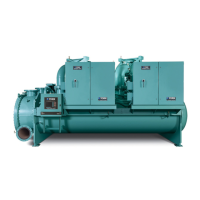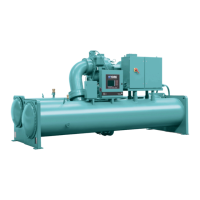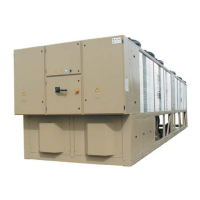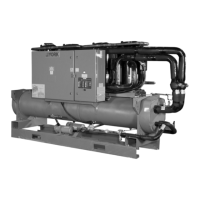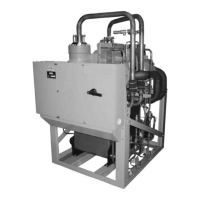6. To determine if it is moisture or a leak, a pressure rise test must be conducted. Evacuate the
system to 5,000 μm again and perform another hold test. If the pressure rise goes to 0 psig,
that indicates that a leak is present. During the hold period, if moisture is present, the pressure
stabilizes at some level below atmosphere and should correspond to the room ambient
temperature or the heat being applied to the vessel. See Table 102 for values.
7. Acceptable vacuum pressure rise is 150 μm for the first 60 min.
8. If the vacuum does not hold for within the limits defined in Step 6, you must find and repair
the leak. For cases where leaks cannot be identified while pressurized but vacuum hold tests
indicate that there is a leak, in most cases this can be traced to an elastomeric (O-ring sealing)
issue.
9. When the 5,000 μm vacuum hold test is successful, you can perform a final evacuation.
Performing the final evacuation
After the pressure test and vessel dehydration have been completed, conduct the final evacuation
as follows:
1. Connect a high capacity vacuum pump, with indicator, to the system using the vapor
connections as shown in Figure 74 and start the pump.
2. Open wide all system valves. Make sure that all valves to the atmosphere are closed with flare
caps if applicable.
3. Operate the vacuum pump to evacuate the system to the best attainable vacuum. The
vacuum must be less than 500 μm but if that cannot be attained, a vacuum at 1,000 μm or
lower is acceptable.
4. Close the system charging valve connection to the vacuum pump to start the 8-hour vacuum
hold test. Note the time and pressure.
5. Hold the vacuum obtained in Step 4 in the system for 8 hours. Any rise that exceeds the limits
in Step 6 can indicate a leak, the presence of moisture, or both.
6. To determine if it is moisture or a leak, conduct a pressure rise test.
7. Evacuate the system to 5,000 μm again and perform another hold test. If the pressure rise
goes to 0 psig, that indicates that a leak is present. During the hold period, if moisture is
present, the pressure stabilizes at some level below atmosphere and should correspond to
room ambient temperature or the heat being applied to the vessel. See Table 102.
8. Check for pressure change with the chiller at the same temperature. Pressure changes
proportional to temperature and can affect results.
9. An acceptable vacuum pressure rise is 150 μm per 60 min:
- 1000TR 1,000 μm
- See factory standard
10. If the vacuum does not hold within the limits defined in Step 6, locate the leak and repair it.
For cases where leaks cannot be identified while pressurized but vacuum hold tests indicate
that there is a leak, in most cases this can be traced to an elastomeric (O-ring sealing) issue.
11. When the 500 μm hold test is successful, you can charge the system using the steps
described in Refrigerant charging.
Refrigerant charging
Before beginning, it is critical to establish that the vapor portion of the refrigerant container or
cylinder has not been contaminated with other gases that are not R-134a or R-513A, including air.
Use the appropriate saturation property table to confirm if the saturation pressure and ambient
153
YMC
2
Mod B with OptiView Control Center
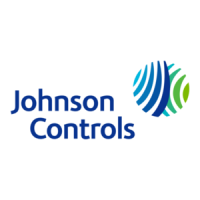
